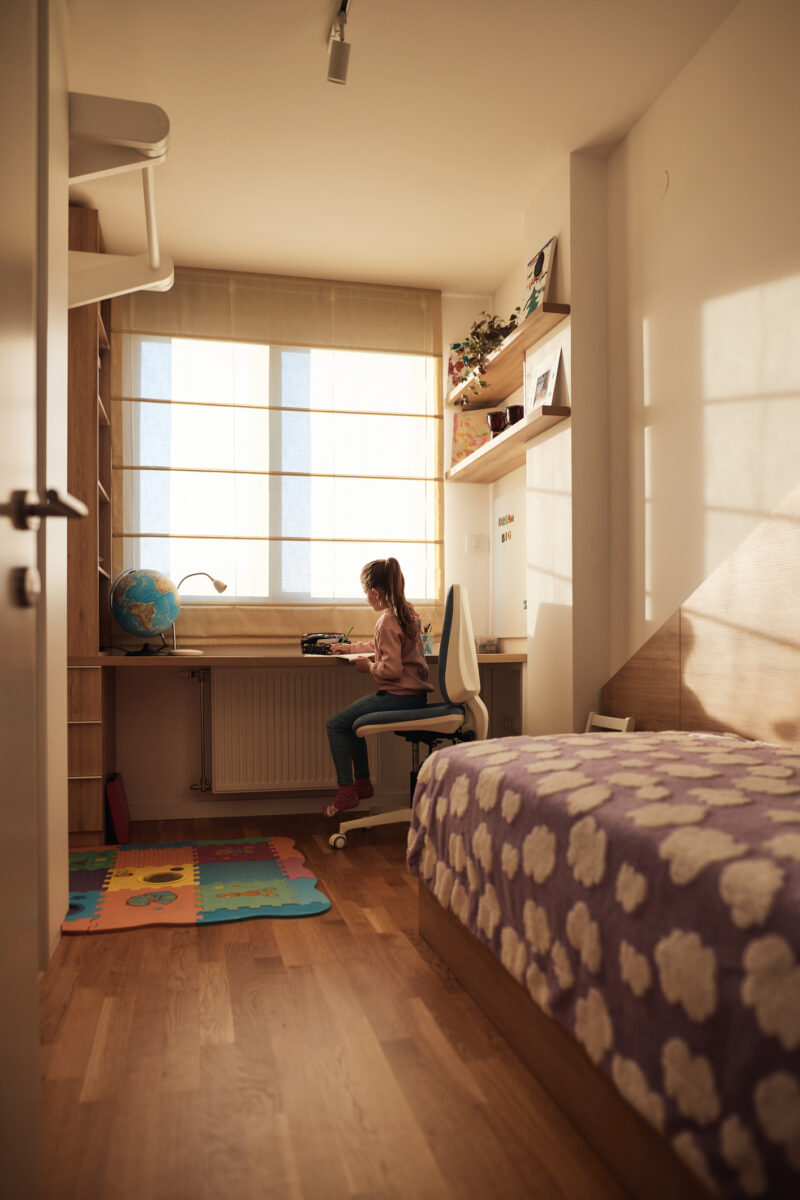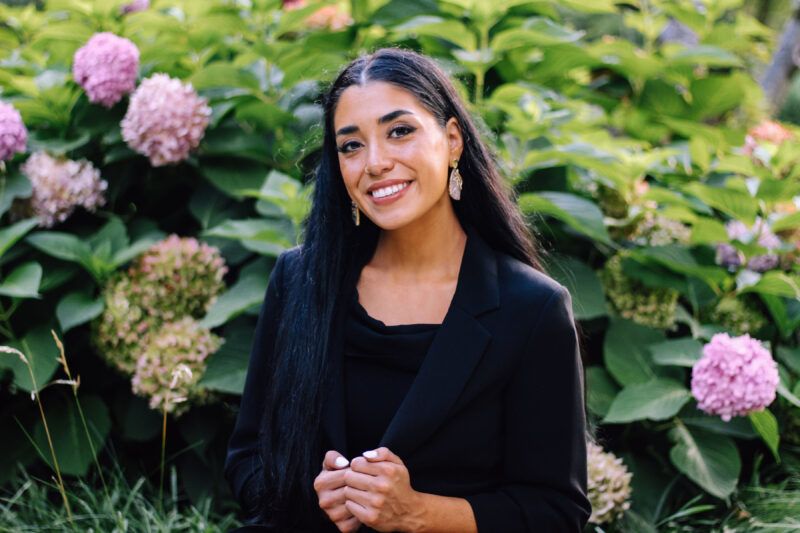
Table of Contents
OCD in Children: Symptoms, Treatment, and How to Help

Written By: Ashley Laderer

Clinically Reviewed By: Krystal Batista
March 21, 2025
8 min.
Do you think your child might be struggling with OCD? Read on to educate yourself on OCD and how to help your child.
Learn more about our Clinical Review Process
Table of Contents
Does your child constantly seek reassurance that they will be okay, excessively wash their hands, or engage in other repetitive rituals? If so, they might be struggling with obsessive-compulsive disorder, commonly referred to as OCD.
OCD is a mental health condition that affects up to 3% of the global population, including around 1 in 100 children. For many people, the onset occurs in childhood. It’s a very distressing and sometimes all-consuming disorder, but effective evidence-based treatments can provide children with great relief from their symptoms. Keep reading to learn more about OCD in children, including signs and symptoms, treatment options, and how to best support your child.

Get the support your child needs to manage OCD
Customized treatment plans for children ages 11+ to support lasting recovery.
Understanding obsessive-compulsive disorder in children
OCD is marked by intrusive, unwanted thoughts, images, and urges (obsessions), leading to repetitive behaviors or mental acts (compulsions) that provide temporary relief from distress—but perpetuate the vicious cycle of obsessions and compulsions over time.
Charlie Health Primary Therapist Lybi Westover, MS, LPC, explains that obsessions can focus on various themes and may involve one or more subtypes of OCD like harm OCD, health OCD, or others. “These obsessions are not what a child wants to be thinking about, but they create a sense of distress, and often cannot be ‘shaken off’ or ‘moved on’ from,” says Westover.
OCD can occur in anyone at any age. However, research has found that there are two main peaks for OCD onset: 7-12 years old or in the early 20s. Developing OCD in childhood does not guarantee it will last into teen or adult years.
Common signs and symptoms of OCD in children
For a child to be diagnosed with OCD, they must experience obsessions and compulsions that cause significant distress and impact their functioning at school, social life, and relationships. Importantly, people with childhood OCD must spend at least an hour a day on their obsessions and compulsions.
Compulsions can be physical and visible to others or mental and not as obvious to others. Westover says some examples of compulsions you might be able to notice are:
- Excessive reassurance seeking
- Checking things repeatedly
- Excessive hand washing
- Excessive cleaning
- Repeating a behavior or action until it feels “just right”
- Repeating something out loud
Mental compulsions include:
- Rumination
- Repetitive mental rituals (like counting)
- Excessive prayer or confession to a higher power
Generally speaking, you might notice that your child seems more anxious, fearful, or preoccupied than usual. They might start to spend more time alone since they are busy carrying out compulsions, or they may avoid certain situations that they used to be okay with. Grades slipping at school are another red flag.
What are the risk factors for OCD in children?
Various factors play a role in whether someone develops OCD. One of the main factors is a family history of OCD, says Na’Keora Bryant, LPC, a Charlie Health Group Facilitator. Research shows a link between genetic heritability and OCD, meaning first-degree relatives of someone with OCD are more likely to develop OCD themselves.
On top of a genetic component, there may also be an environmental, learned component, Bryant says. If a parent has OCD and is engaging in compulsions or other OCD behavior frequently in front of the child, they might end up learning this behavior. Trauma (such as abuse or neglect) is another risk factor for developing OCD in childhood, Bryant says.
In rarer cases, OCD or OCD-like behaviors can occur after a streptococcal infection, like strep throat. This is known as PANDAS –– pediatric autoimmune neuropsychiatric disorders associated with streptococcal infections. PANDAS is a possibility, especially if OCD appears seemingly out of nowhere and the child has recently been sick.
The difference between OCD and anxiety in children
Childhood OCD
Childhood anxiety
Childhood OCD involves distressing, intrusive thoughts (obsessions) and repetitive behaviors (compulsions) that interfere with a child’s daily life, causing significant distress.
Childhood anxiety is driven by excessive worries about real-world events and often leads to avoidance, without the presence of the obsessions and compulsions seen in OCD.
Some parents may struggle to differentiate between OCD and an anxiety disorder in children. There certainly is some crossover, but it’s important to understand the differences to best help your child.
“Anxiety is often more rooted by excessive worries around real-world events that may lead to a sense of avoidance but are not characterized by distinct obsessions and compulsions,” Westover says. “The obsession and compulsion cycle characterized by OCD is often rooted in illogical and irrational based fears from the intrusive, unwanted thoughts, images, feelings, or urges.” For example, she says a child with anxiety surrounding school lunch might be worried about being made fun of for their choice of food. In contrast, a child with OCD might fear food contamination and need to complete their sanitation rituals before they feel comfortable enough to eat.
That said, anxiety disorders and OCD do commonly co-occur. A child must receive a comprehensive psychological assessment to determine the correct diagnosis or diagnoses.
What is the treatment for OCD in children?
The first line of treatment is typically therapy. In some cases, a therapist might refer a child to a psychiatrist if they think medication may be a fit.
Therapy for OCD in children
A couple of therapy modalities can help treat pediatric obsessive-compulsive disorder, including:
Cognitive behavioral therapy (CBT)
CBT is a common choice for treating OCD in children, Bryant says, since it helps them identify and cope with distressing thoughts. The focus of CBT is addressing thoughts and behaviors that are unhelpful and working to build healthier ones. CBT can also teach children useful coping skills and relaxation techniques.
Exposure and response prevention (ERP)
ERP is an offshoot of CBT, often considered the gold standard for treating OCD symptoms. ERP is tailored around the specific fear or OCD cycle that the child is suffering from, Westover says. This allows the child to confront their obsessions and anxiety head-on.
In ERP, the therapist encourages the child to engage in exposures that purposely provoke their distressing obsessions and subsequently cause anxiety to spike. From there, they will have to actively resist engaging in their usual compulsive behavior. For example, if they have health or contamination OCD, an exposure might be touching a doorknob, allowing anxiety to arise. If their compulsion is typically to wash their hands multiple times after touching a doorknob, the therapist will have them refrain from engaging in this.
From the ERP process, they will learn to let anxiety peak and reduce on its own. Over time, the anxiety will lessen as the child learns that their obsessions are not dangerous and that they don’t need to engage in compulsions.

Medication for OCD in children
If therapy alone isn’t resulting in enough relief, a provider might recommend medication, especially in cases of severe OCD. In children and adults alike, antidepressants known as selective serotonin reuptake inhibitors (SSRIs) are the most common medication for OCD treatment.
There are a few SSRIs that are FDA-approved for use in pediatric OCD, including:
- Prozac (fluoxetine)
- Luvox (fluvoxamine)
- Zoloft (sertraline)
Another medication, Anafranil (clomipramine), is a tricyclic antidepressant (TCA) that’s also FDA-approved for pediatric obsessive-compulsive disorder. However, it is not a first-line treatment due to a higher risk of side effects. A psychiatrist might prescribe Anafranil if SSRIs were not an effective treatment.
A provider specializing in child and adolescent psychiatry can explain the benefits and risks of medications, helping decide whether it’s the right fit. They will also carefully monitor the child for side effects and progress, adjusting dosages where necessary.
How to support children with OCD
It’s important for parents to support children with OCD to the best of their ability. Here are six ways to help.
1. Educate yourself
“Parents can best support a child with OCD by researching the diagnosis and getting informed about the symptoms and treatments available,” Westover says. Especially if you don’t have OCD yourself or have never known someone who has it, it’s important to learn about the symptoms. This way, you can better understand what your child is going through.
2. Help them get treatment early
It’s crucial to seek treatment, and it’s never too early to take action. Bryant suggests seeking help as soon as possible after you notice any OCD symptoms since you don’t want these behaviors to become conditioned. Seeking early intervention can help reduce the likelihood of OCD continuing into adulthood.
3. Get involved with therapy
It’s important to understand the therapy your child is receiving and know how you can help them continue this important work at home. “Parents knowledgeable about their child’s treatment and plans created in therapy can be helpful for day-to-day navigation of life outside of session time and foster a sense of harmony with the home being aligned on how to target symptoms and behaviors as an overall family unit,” Westover says.
Especially if your child is in ERP therapy, it’s crucial to understand how to respond to their OCD in a helpful yet non-enabling way, Westover adds. You want to strike a balance between helping them feel better while also ensuring you don’t provide too much reassurance that could ultimately fuel the OCD cycle. Ask your child’s therapist how you can best do this at home.
4. Consider communicating with the school
It is not a requirement to disclose your child’s OCD diagnosis to their teacher or school. However, Bryant recommends informing the school since it can benefit the child if their teacher is aware of their OCD. This is especially the case if your child’s grades are being affected by their OCD. From here, teachers can provide accommodations to help the child succeed and feel more comfortable in class.
5. Seek support for yourself
Having a child with OCD can also affect your own mental health, so don’t neglect your own needs. You can attend support groups for parents or family members of children with OCD or other mental health conditions. The National Alliance on Mental Illness (NAMI) offers both in-person and virtual support groups for family members. Additionally, the International OCD Foundation has a list of many OCD-related support groups, including ones for family members.
6. Love and support your child
Last but certainly not least, show your child the love, support, and compassion they deserve. Dealing with a mental health condition as a kid can feel very scary and isolating. Make sure they know that you’re here to listen and support them however you can –– and that you love and accept them exactly as they are.

How Charlie Health can help
If your child is struggling with OCD, Charlie Health can help. Our virtual Intensive Outpatient Program (IOP) offers more than once-weekly support for people ages 11 and up who are dealing with a range of mental health conditions, including obsessive-compulsive disorder.
Treatment at Charlie Health combines group sessions, individual counseling, family therapy, and medication management when needed, providing a holistic approach to healing. We offer sessions at convenient times that allow children to maintain their school schedules and day-to-day activities alongside treatment. Fill out the form below or give us a call to start your child’s healing journey today.
References
https://www.ncbi.nlm.nih.gov/books/NBK553162/
https://iocdf.org/about-ocd/who-gets-ocd/
https://www.ncbi.nlm.nih.gov/books/NBK519704/table/ch3.t13/
https://www.nature.com/articles/s41398-023-02433-2
https://kids.iocdf.org/what-is-ocd-kids/how-is-ocd-treated/medication-for-pediatric-ocd/
https://pmc.ncbi.nlm.nih.gov/articles/PMC10465687/
https://kids.iocdf.org/what-is-ocd-kids/how-is-ocd-treated/medication-for-pediatric-ocd/
https://pmc.ncbi.nlm.nih.gov/articles/PMC10465687/




